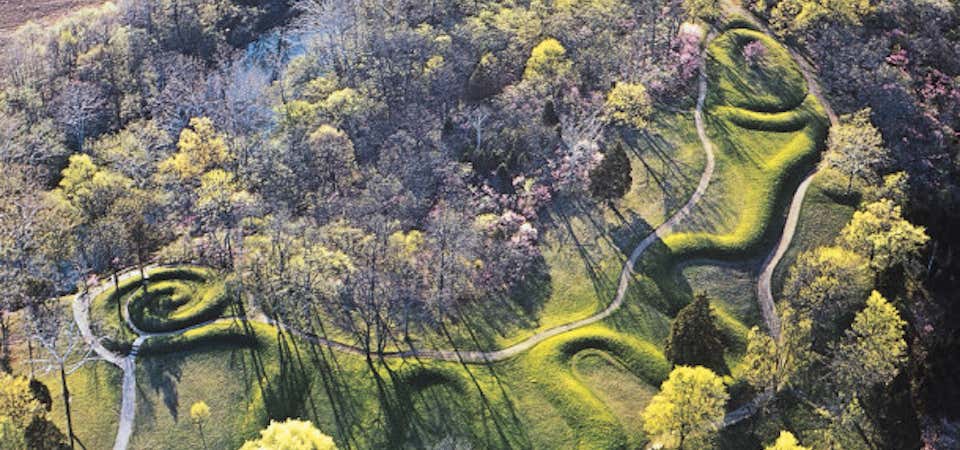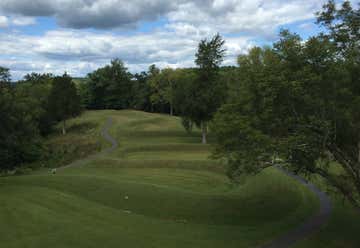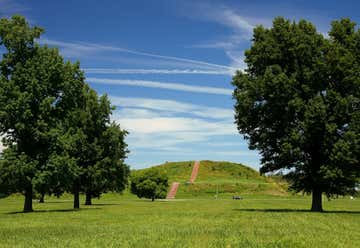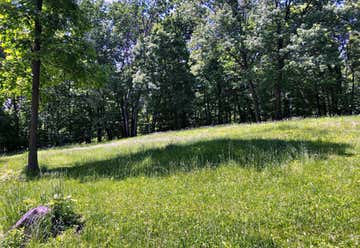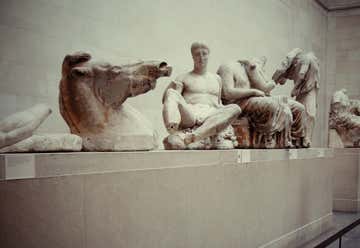There’s something so alluring about the unknown; that’s where a large part of the fascination with ancient Indian burial mounds comes from. Who built them? And why, exactly? And, most importantly, how were they able to carry the massive amounts of dirt it took to build some of the larger ones and how did they map out such huge animal-shaped effigies? The mysteries will remain unanswered until I can get enough plutonium to power the flux capacitor on my DeLorean- but maybe the charm of the unknown is for the best!
The Serpent Mounds are an effigy of a, surprise surprise, winding snake. At a whopping 1370 feet long, this is the world’s longest serpent effigy. While historians are still unsure of which culture (or cultures) built the mound, they do know that the serpent itself was not built for burial purposes. It does have astrological significance though; the head aligns for the summer solstice sun, the curves could correspond to lunar positions, and the coils in the tail could be related to the winter solstice and equinoxes. It’s also probably the reason for global warming, but who am I to say? Some theorize that the snake could depict the legend of Uktena- a giant, mystical snake of Native American lore, which is way cooler than global warming. WAY cooler.
This Southern Illinois historical site was actually a huge mound city- researchers believe that at its largest it was 6 square miles (with 120 mounds); today, it’s a fraction of that at 3.5 square miles, and only has 80 mounds. Basically, it was the NYC of the ancient Indian world, and no North American city surpassed it until the 1800s, nearly 600 years later. Today, you can visit and see all kinds of sites, including the resting place of an important ruler (Mound 72, pictured above), a Cahokian version of Stonehenge (but with wooden poles), and the public plaza, where Cahokians played a highly competitive moving-target, spear-throwing game called Chunkey. The Indian burial mounds do not help deny nor confirm that “Get chunked!” was the preferred taunt in Chunkey.
This National Monument contains a mind-blowing 208 mounds, with 67 in the North Unit, 29 in the South, and 112 in the Sny Magill Unit. All kinds of animals, from birds to bears, are depicted in effigy here. The largest Indian burial mound is the Great Bear Mound- it’s 42 meters long and a meter high. Perhaps this was an early example of graffiti, and this was the tribe’s way of claiming land – the land of Great Bear and Dots.
The group behind these Indian burial mounds are referred to as the Fort Ancient Indians, for the “fort”-like mounds they built. It took them an estimated 400 years to build the 3.5 miles of earthen walls, which enclose 100 acres of land. Whoa. Researchers believe the complex was used for social and ceremonial gatherings, as they have found a primitive calendar made of rocks and gaps in the walls correspond with summer and winter solstices. Party like it’s 1399, y’all!
The Spiro mounds are located the furthest west of all the mounds. Between 1933 and 1935, looters tunneled into the Great Mortuary, the resting place of Spiro’s rulers, and stole many priceless artifacts. They sold what they could and discarded the human remains and more fragile pieces, destroying them in the process. They also blew up the mound with dynamite when they were finished, compromising it entirely. Talk about not appreciating history.
Wisconsin has a lot of ancient mounds that can be found all over the state- even in playgrounds! This group, consisting of a bird and a turtle, is in pretty good shape considering that they’re surrounded by buildings and occasionally get mowed. Linear Mound and a panther-shaped mound used to be located nearby, but they were destroyed. Really, human race? Really?
Roadtrippers
Roadtrippers helps you find the most epic destinations and detours—from roadside attractions to natural wonders and beyond.
